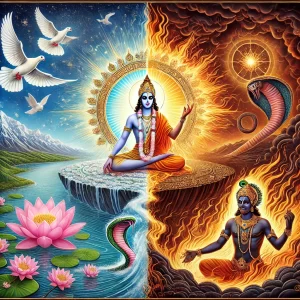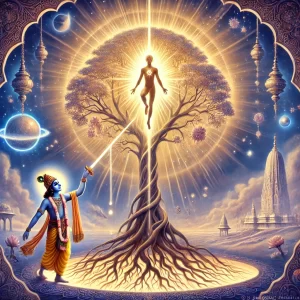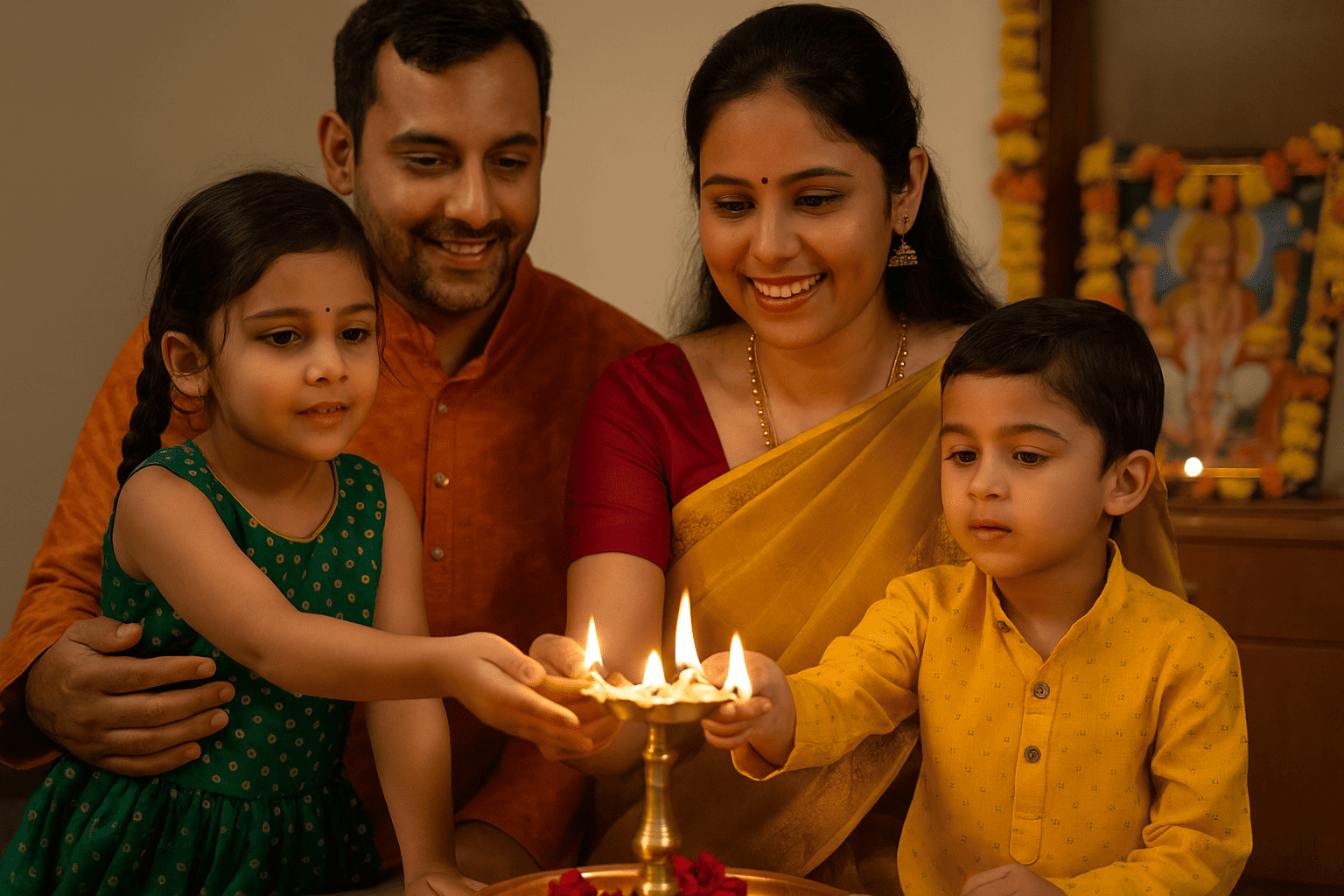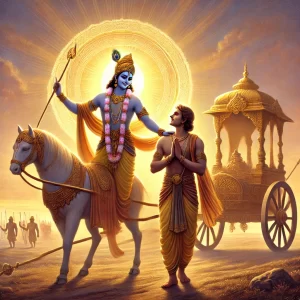
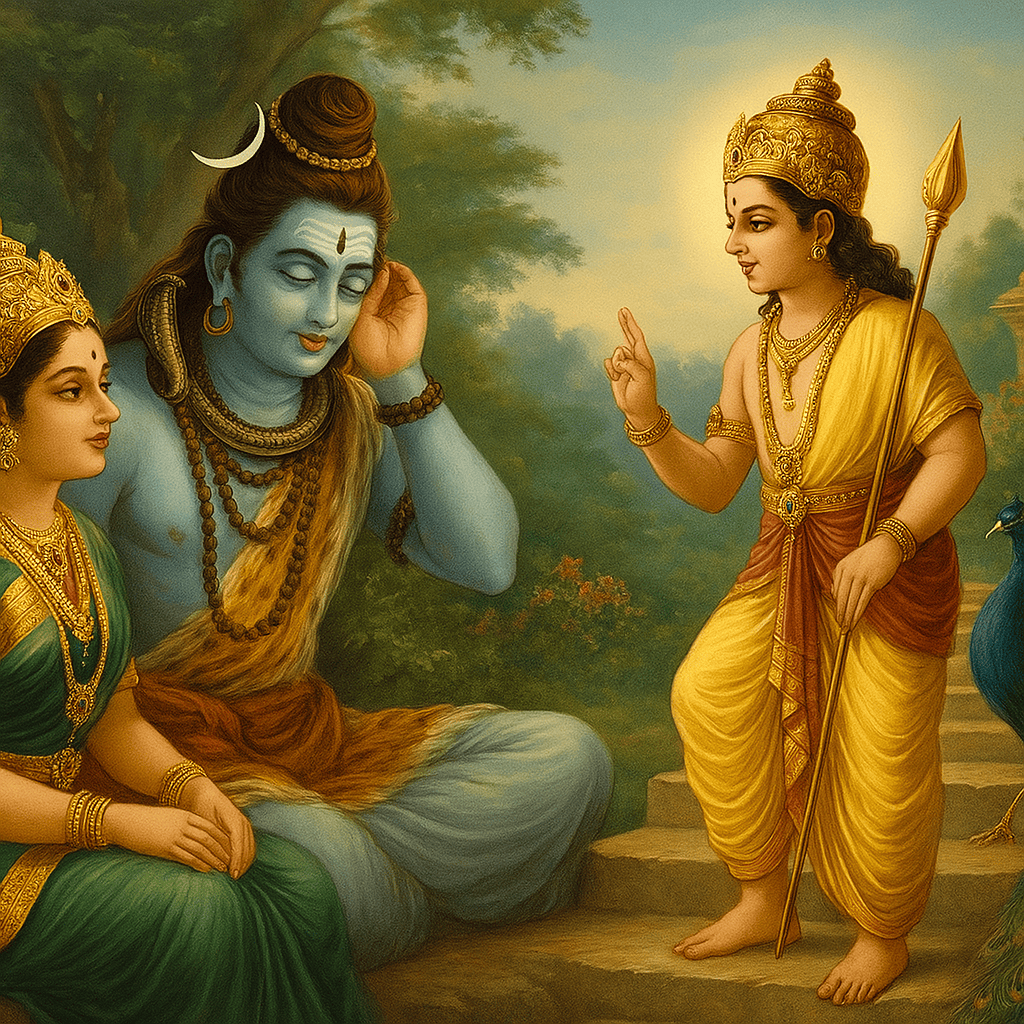
In the timeless rhythm of the cosmos, there echoes a single, sacred syllable—“Om”. It is not just a sound, but the primordial vibration, the seed of all creation, the breath with which the universe came into being. Even the Vedas, the most ancient scriptures, begin and end with it. It is the unspoken origin and the final truth.
And yet, as the legend goes, Lord Shiva, the supreme deity who danced the Tandava and who wore the crescent moon upon his matted locks, once sought to learn the true essence of “Om.”
How could this be? How could the Mahadeva himself, the god of wisdom and dissolution, not fully grasp the meaning of the sound that pulses through all of existence?
The answer lay not in knowledge—but in humility, surrender, and the mystery of divine roles.
After the defeat of the demon Surapadman and the divine wedding of Murugan and Deivanai at Thirupparamkunram, Lord Murugan continued to dwell on earth, teaching dharma and guiding devotees. He was no longer just the youthful god of war; he had become a being of luminous wisdom.
One day, Shiva and Parvati came to visit him as he wandered through the fertile lands of southern Bharat. The three traveled together, enjoying the peaceful forests and singing rivers, eventually arriving near the village of Swamimalai, on the banks of the sacred Kaveri River.
There, beneath a flowering banyan tree, a question arose—either from a playful test or a divine plan.
Shiva looked at Murugan and asked,
“My son, you have conquered demons and taught sages. Can you tell me the meaning of Om?”
Murugan looked up at his father—not with arrogance, but with the calm confidence of deep realization. He did not speak. Instead, he turned, walked silently up a nearby hill, and from its summit declared:
“If you wish to understand the true meaning of Om, come to me—not as a father to a son, but as a seeker to a guru.”
The celestial attendants, rishis, and gods who witnessed this moment were stunned. Could the great Shiva, the teacher of the Vedas, submit to a child?
But this was no ordinary child. Murugan was born of Shiva’s own third eye—his very essence. And Shiva knew that wisdom does not bow to age; it bows to realization.
With no pride, no hesitation, Shiva walked up the steps to meet Murugan on the hilltop. There, he bowed his head. Murugan leaned forward and, with infinite grace, whispered the meaning of Om into Shiva’s right ear—a teaching too profound for the world to hear aloud.
In that silence, the soundless sound resonated. It held the birth of galaxies, the stillness of meditating sages, the cry of a newborn, and the final breath of the dying. It was the universe itself, reduced to a syllable, passed from son to father, disciple to guru.
From that sacred moment, Murugan became Swaminatha—“The Teacher of the Lord”. The hill became Swamimalai, the fourth of his six sacred abodes.
To this day, the temple at Swamimalai stands with Murugan not in his warrior form, but as a Guru, holding no weapon but the gnana mudra—the gesture of enlightenment. He faces east, ever radiant, ever calm, and invites all seekers to shed ego and approach as Shiva once did.
The temple’s structure is symbolic: one must climb sixty steps to reach the sanctum, each step representing the sixty Tamil years in a complete time cycle, reminding us that the path to realization transcends time itself.
The story of Swamimalai is not just about gods and mountains. It is a teaching for all beings:
Even the wisest must become humble to receive true wisdom.
Knowledge is not a matter of age or position, but of inner awakening.
And sometimes, the teacher we seek may come in forms we least expect.
At Swamimalai, Lord Murugan is not just a deity to be worshipped, but a Guru to be contemplated—one who whispers not just into ears, but into the soul of every devotee who ascends in search of truth.


